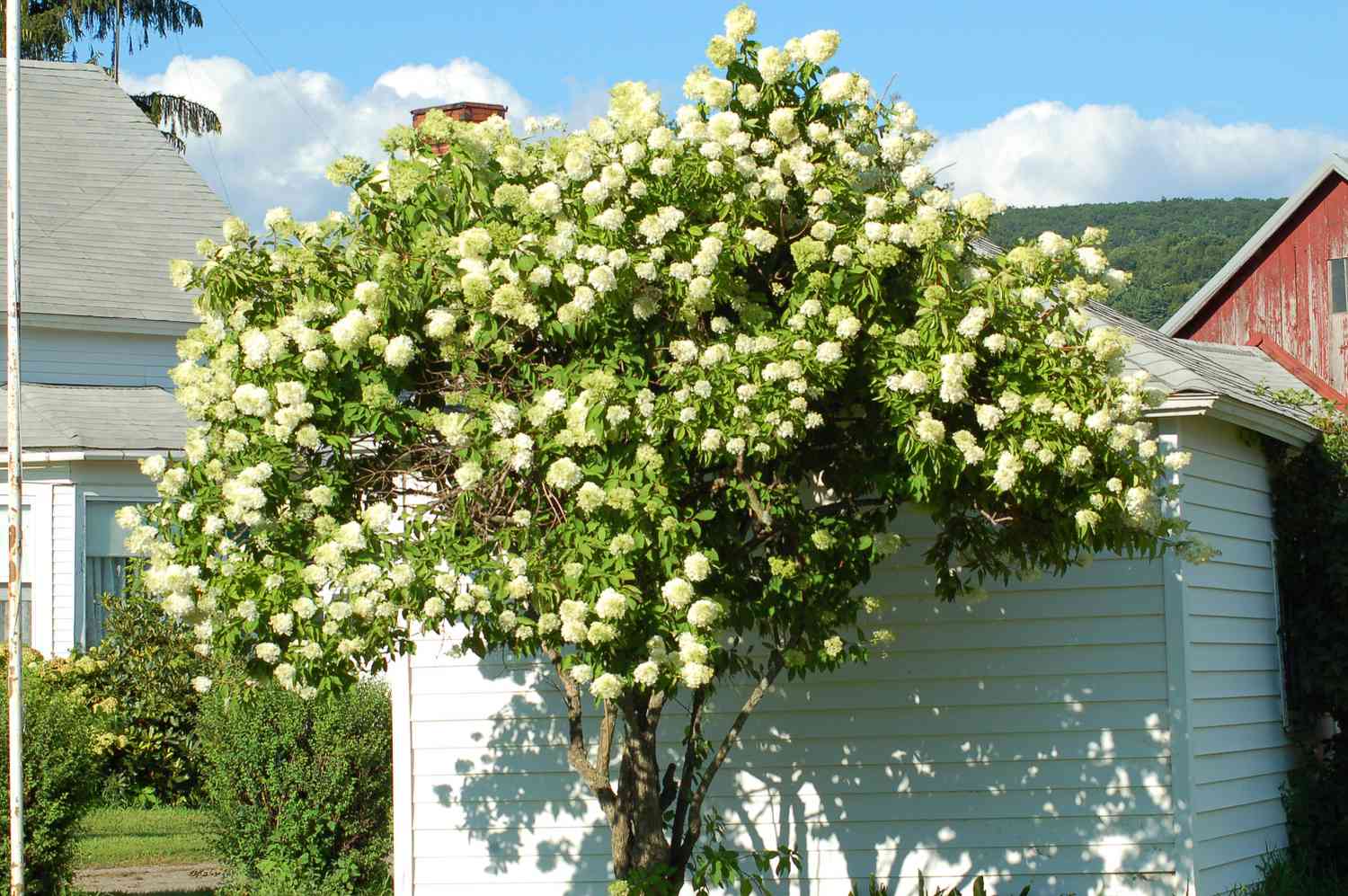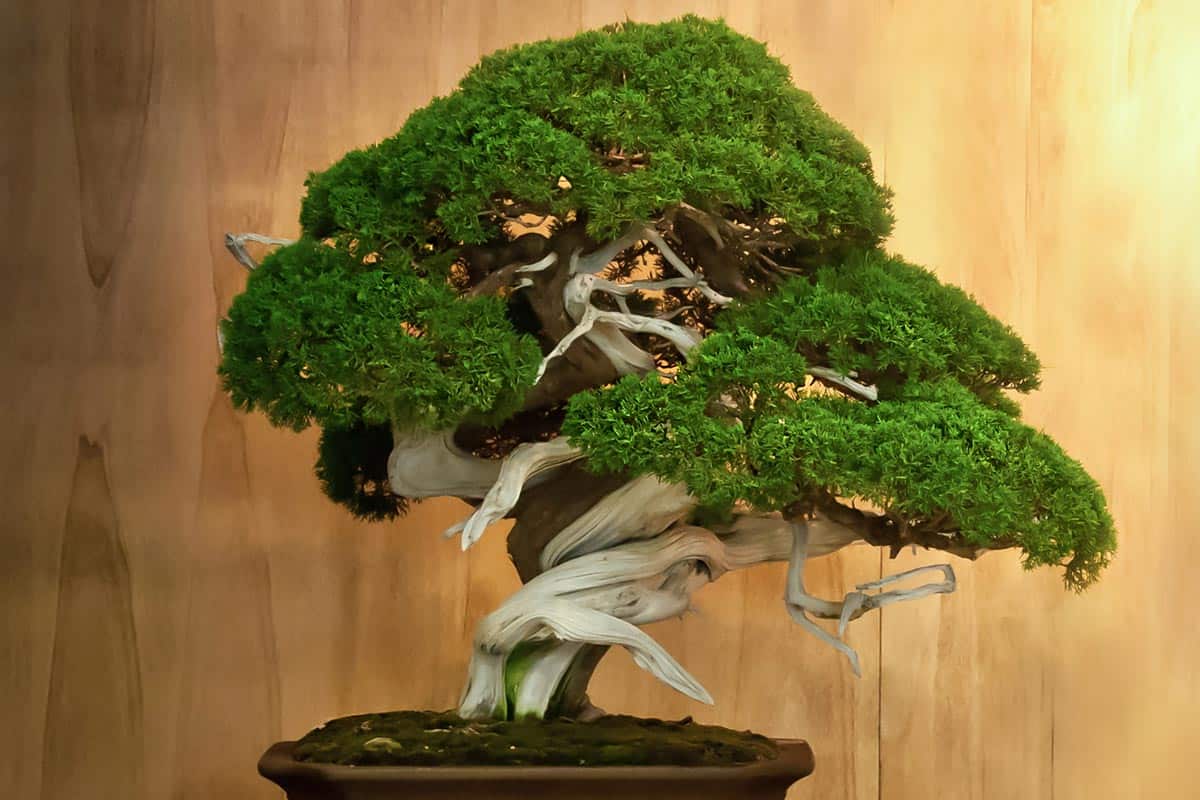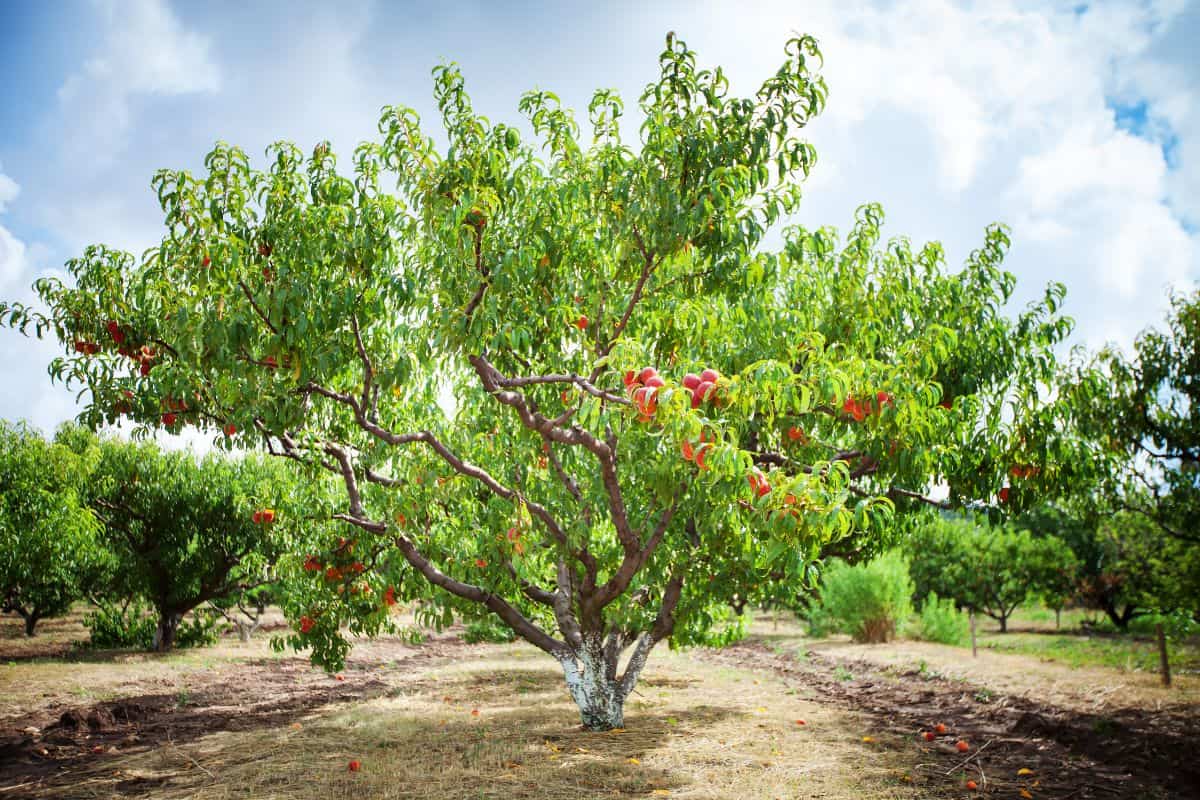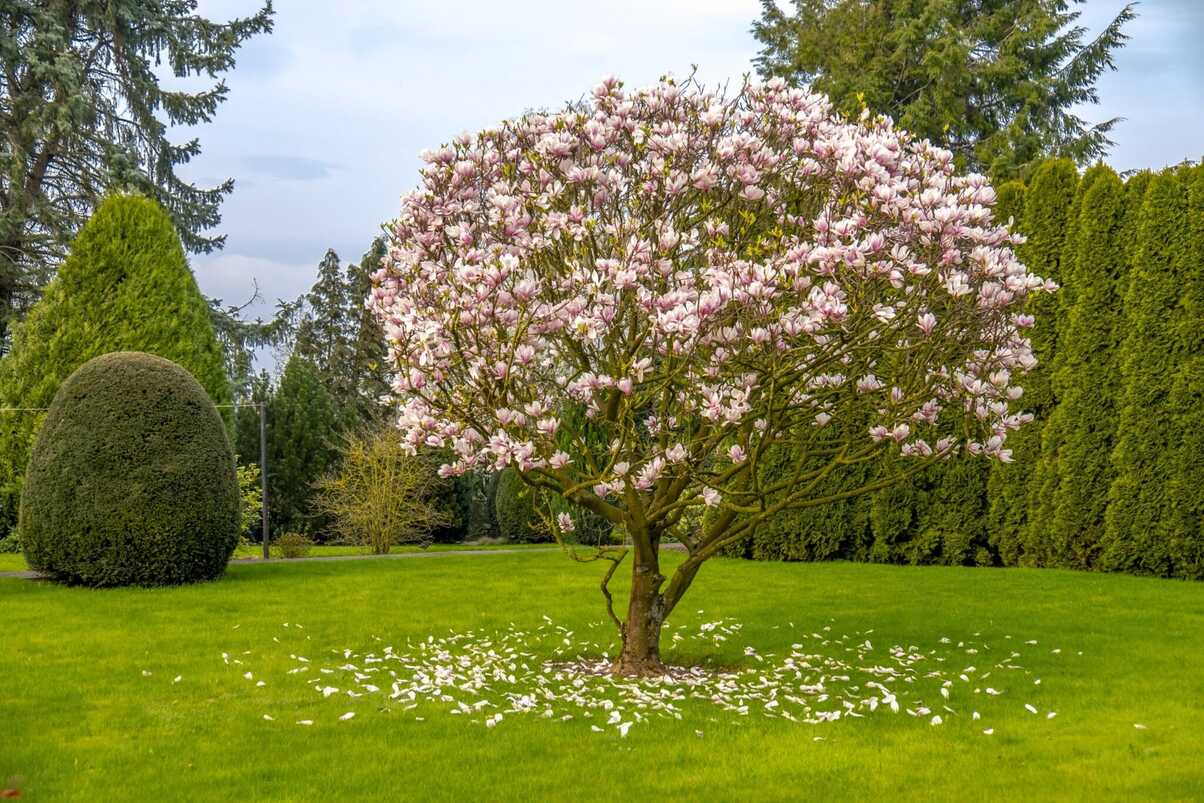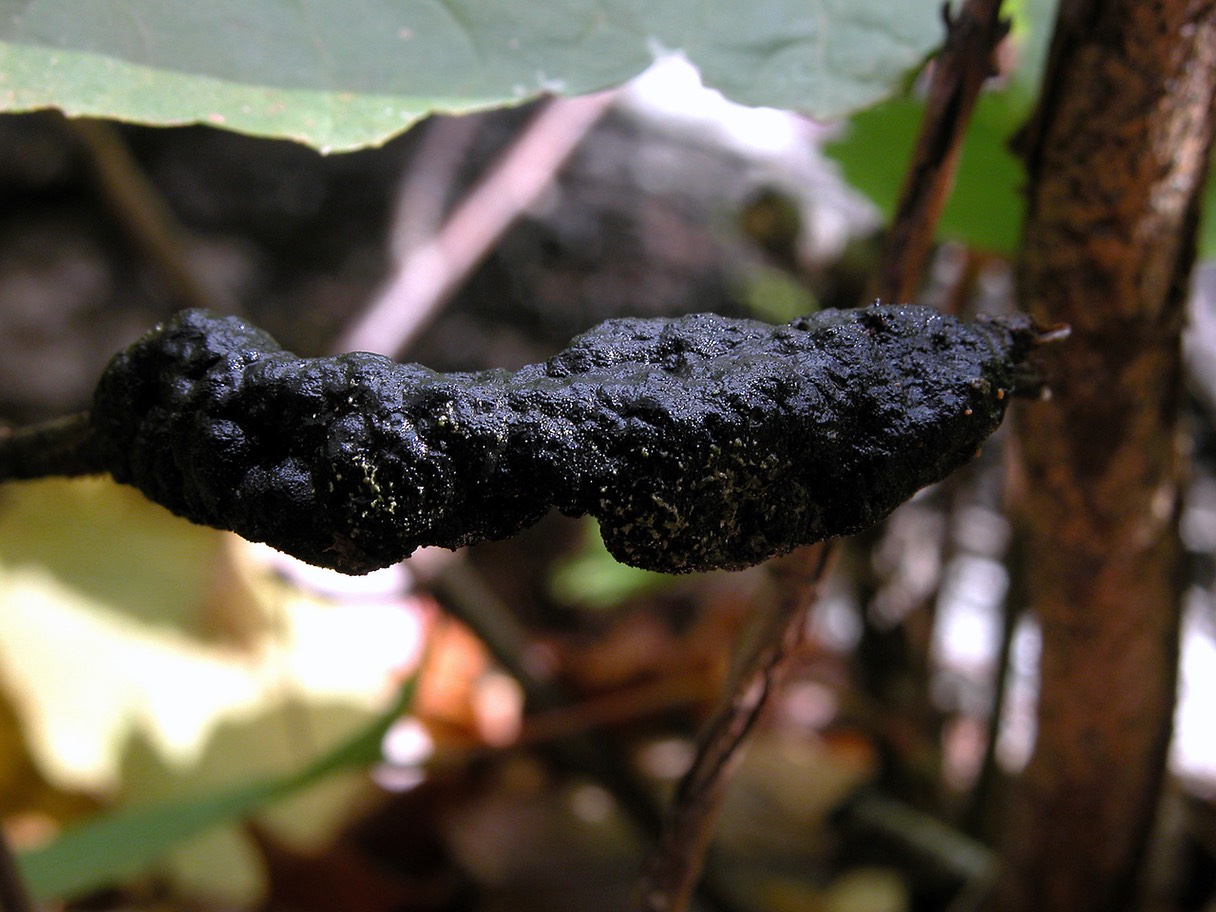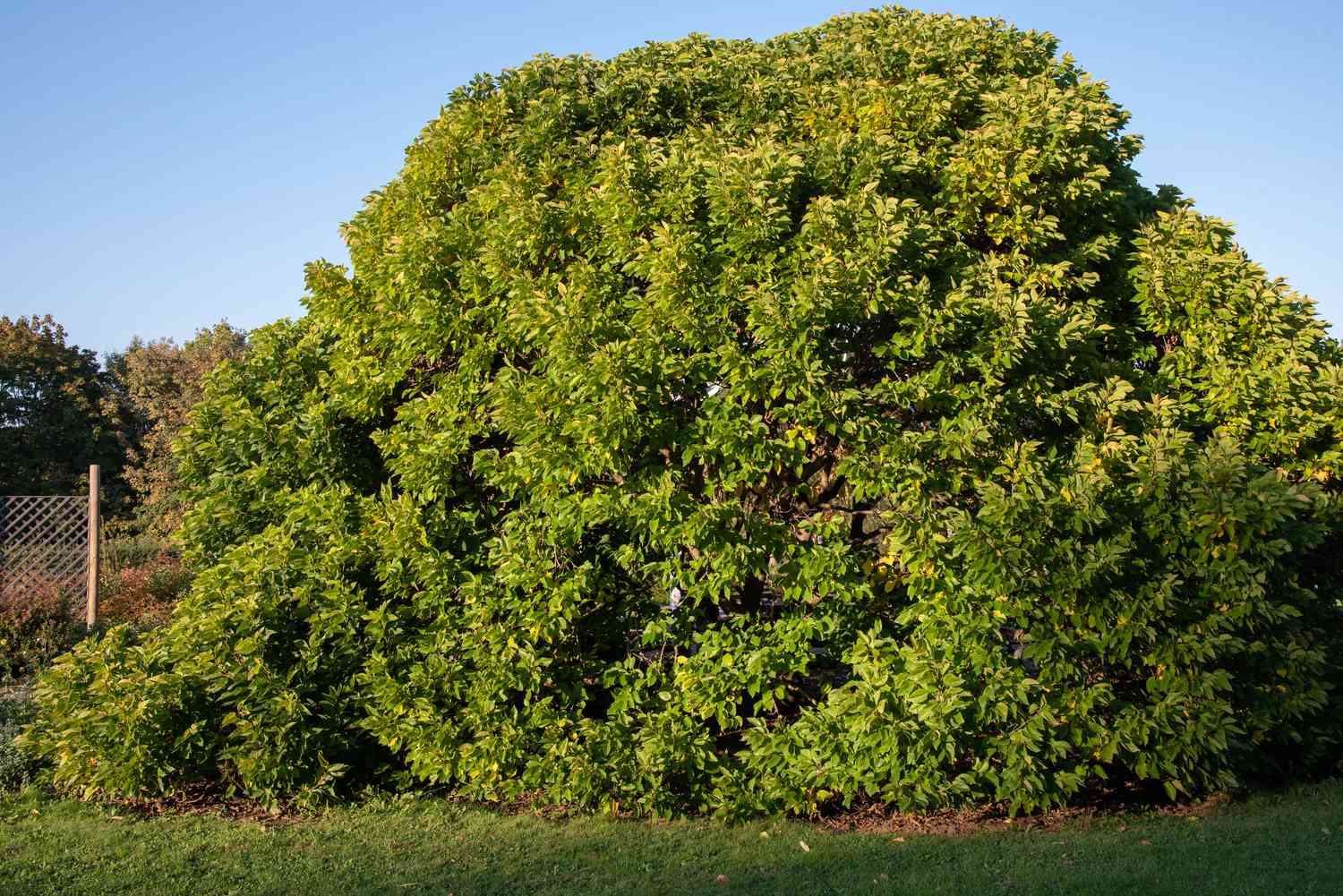Home>Gardening News and Trends>Latest News>How To Get Free Trees


Latest News
How To Get Free Trees
Modified: February 8, 2024
Discover the latest news on how to get free trees. Explore tips, resources, and step-by-step guides to maximize your green space for free.
(Many of the links in this article redirect to a specific reviewed product. Your purchase of these products through affiliate links helps to generate commission for Chicagolandgardening.com, at no extra cost. Learn more)
Table of Contents
Introduction
Planting trees is not only beneficial for the environment but also for our well-being. Trees provide numerous advantages, including improving air quality, reducing noise pollution, conserving water, and enhancing the beauty of our surroundings. However, buying trees can be costly, especially if you have a large area to cover. Luckily, there are various ways to get free trees and contribute to the greening of our planet.
In this article, we will explore the different avenues you can take to obtain free trees. We will discuss local government programs, non-profit organizations, tree giveaways and events, the Arbor Day Foundation, and online platforms that facilitate tree exchange. By taking advantage of these resources, you can plant trees without breaking the bank and make a positive impact on the environment.
Before we delve into the specifics of obtaining free trees, it’s crucial to understand the immense benefits that come with planting them. Trees play a vital role in mitigating climate change by absorbing carbon dioxide and releasing oxygen through the process of photosynthesis. This helps to improve air quality and combat global warming.
Moreover, trees act as natural filters, removing pollutants such as ozone, nitrogen dioxide, and particulate matter from the air. They also provide shade, reducing the need for air conditioning and lowering energy consumption. This, in turn, helps to combat the urban heat island effect and minimize greenhouse gas emissions.
Furthermore, trees play a significant role in water conservation. Their root systems help to prevent soil erosion and retain water in the ground. This reduces the risk of flooding and ensures a more sustainable water supply for both humans and wildlife.
The aesthetic value of trees should not be overlooked either. Their presence enhances the visual appeal of our neighborhoods, parks, and public spaces. Studies have shown that green environments can improve mental well-being, reduce stress levels, and even boost productivity.
With all these benefits in mind, let’s explore the various avenues to obtain free trees and contribute to the growing green movement.
Benefits of Planting Trees
Planting trees is not only a noble act but also offers a myriad of benefits for the environment and society as a whole. Understanding the advantages of planting trees can inspire more people to take part in this important endeavor. Let’s explore some of the significant benefits of planting trees:
- Improving air quality: Trees play a vital role in reducing air pollution by absorbing carbon dioxide and releasing oxygen. They also help in filtering out harmful pollutants and improving overall air quality in both urban and rural areas.
- Conserving water: Trees act as natural filters, preventing soil erosion and retaining water in the ground. This aids in water conservation, reduces the risk of flooding, and ensures a sustainable water supply for both humans and wildlife.
- Enhancing biodiversity: Trees provide habitats for a wide range of species, supporting biodiversity and promoting ecological balance. They serve as homes for birds, insects, and other wildlife, helping to maintain a healthy and diverse ecosystem.
- Reducing noise pollution: Trees can help absorb sound and act as a buffer against noise pollution. Planting trees along roadsides, near highways, or in urban areas can reduce noise levels, creating a more peaceful and tranquil environment.
- Combating climate change: Trees play a crucial role in mitigating climate change by sequestering carbon dioxide and reducing greenhouse gas emissions. They act as carbon sinks, absorbing harmful greenhouse gases and helping to cool the planet.
- Improving mental well-being: Research has shown that being in nature and surrounded by trees has a positive impact on mental health. Spending time in green spaces can reduce stress, improve mood, and enhance overall well-being.
- Adding aesthetic value: Trees enhance the beauty of our surroundings, whether it’s in a park, residential area, or along streets. They provide shade, create pleasant landscapes, and increase property values.
The benefits of planting trees are numerous and far-reaching. By contributing to the growth of the tree population, we can make a positive impact on the environment, improve our quality of life, and create a greener and more sustainable future for generations to come.
Where to Get Free Trees
If you’re looking to add more greenery to your surroundings but don’t want to break the bank, there are several avenues you can explore to obtain free trees. Here are some of the best sources for acquiring free trees:
- Local government programs: Many local municipalities and government agencies have programs in place to promote tree planting and conservation. They often offer free or subsidized trees to residents. Check with your city or town’s parks and recreation department or forestry division to find out about any available programs or initiatives.
- Non-profit organizations: Numerous non-profit organizations dedicated to environmental conservation and tree planting offer free trees to individuals and communities. These organizations may distribute trees during specific events or have ongoing programs that allow people to request free trees. Examples include organizations like The Arbor Day Foundation and local tree planting organizations.
- Tree giveaways and events: Keep an eye out for tree giveaways and planting events in your area. These events are often organized by local environmental groups, nurseries, or community organizations. They provide an opportunity to acquire free trees while also learning about proper tree care and meeting other like-minded individuals passionate about environmental conservation.
- The Arbor Day Foundation: The Arbor Day Foundation is a well-known non-profit organization that aims to inspire people to plant, nurture, and celebrate trees. They offer various programs that provide free trees, including their Tree City USA program and the Community Canopy program. Visit their website to find out how you can participate and receive free trees for your community.
- Online platforms for tree exchange: There are online platforms where individuals can connect and exchange trees or plant materials. These platforms allow people with surplus trees or seedlings to offer them to others who are in need. Websites such as Freecycle and Craigslist often have sections dedicated to plant and tree exchanges. Joining gardening or horticultural forums and groups on social media can also lead to opportunities for obtaining free trees.
When seeking out free trees, it’s important to research and verify the credibility of the source. Ensure that the trees you receive are of good quality and suitable for your specific climate and growing conditions.
By exploring these avenues and tapping into resources available in your community and online, you can acquire free trees and contribute to the greening of your surroundings without incurring significant costs. Remember to plan and prepare for the proper planting and care of your new trees to ensure their long-term survival and growth.
Local Government Programs
Local government programs are an excellent source for obtaining free trees. Many municipalities and government agencies have initiatives in place to encourage tree planting and conservation within their communities. These programs aim to enhance the local environment, improve air quality, and promote a more sustainable living environment for residents.
One of the primary ways local governments offer free trees is through distribution programs. These programs often provide residents with trees at little to no cost. The types of trees available may vary based on the region, climate, and other factors. Some programs may focus on native tree species to promote biodiversity and support local ecosystems.
To find out about local government programs offering free trees, start by contacting your city or town’s parks and recreation department, forestry division, or environmental department. They can provide information on any ongoing tree distribution programs or upcoming events where free trees will be available.
Additionally, some municipalities organize tree planting events where community members can participate and receive free trees. These events create a sense of community involvement and raise awareness about the importance of tree planting and conservation. Participants often receive guidance on proper tree planting techniques, as well as educational materials on tree care and maintenance.
It’s important to keep in mind that local government programs offering free trees may have certain eligibility requirements or limitations. For instance, some programs may prioritize trees for low-income households or specific geographic areas. Others may have limits on the number of trees an individual can receive.
When participating in local government tree distribution programs, it is essential to follow the guidelines provided and ensure that the trees you receive are suitable for your climate and growing conditions. Municipalities often provide information on the proper care and maintenance of the trees to maximize their chances of survival.
By taking advantage of local government programs that offer free trees, you not only beautify your community but also contribute to a healthier and more sustainable environment. The trees you receive will enhance the aesthetics of your surroundings, improve air quality, provide shade, and add value to your property.
Reach out to your local government and inquire about their tree planting programs. Get involved in the community’s efforts to green the environment and make a positive impact through tree planting and conservation.
Non-profit Organizations
Non-profit organizations dedicated to environmental conservation and tree planting are a valuable resource for obtaining free trees. These organizations aim to promote sustainable practices, raise awareness about the importance of trees, and empower individuals and communities to make a positive impact on the environment.
The Arbor Day Foundation is one such prominent non-profit organization that encourages tree planting and offers free trees to individuals and communities. They have various programs through which you can receive free trees, depending on your specific needs and location. For instance, their Tree City USA program recognizes cities and towns that prioritize tree care and management. As part of this program, participating communities often receive free trees to plant in public areas such as parks, school campuses, and streetscapes.
Another initiative of the Arbor Day Foundation is the Community Canopy program. Through this program, homeowners can request free trees to plant in their yards. The foundation provides guidance on selecting the right species, offers resources on proper tree care, and even allows you to calculate the energy-saving benefits of the trees you plant.
In addition to the Arbor Day Foundation, many local non-profit organizations focused on tree planting and environmental conservation also offer free trees. These organizations often collaborate with municipal governments, businesses, and community volunteers to distribute trees and raise awareness about the importance of tree planting.
To find non-profit organizations offering free trees in your area, consider reaching out to local environmental groups, garden clubs, or tree planting organizations. These organizations may have ongoing programs or annual events where they distribute trees to residents. They might also provide educational resources and workshops on proper tree planting techniques and care.
When obtaining free trees from non-profit organizations, it’s important to understand their specific guidelines and procedures. Some organizations may require you to submit an application or participate in a workshop or community event to receive free trees. It’s essential to follow the instructions provided and adhere to any planting requirements or maintenance recommendations to ensure the successful growth of your trees.
By partnering with non-profit organizations dedicated to tree planting and conservation, you can not only acquire free trees but also contribute to their larger mission of fostering a greener and more sustainable world. Take advantage of the resources and expertise available through these organizations to make informed decisions about tree selection, planting techniques, and ongoing care.
By planting trees provided by non-profit organizations, you contribute to the enhancement of natural habitats, improved air quality, and the overall well-being of your community.
Tree Giveaways and Events
Tree giveaways and events are fantastic opportunities to acquire free trees while actively participating in community greening initiatives. These events are often organized by local environmental groups, nurseries, or community organizations. They aim to promote tree planting and educate individuals about the importance of trees in our ecosystems and urban environments.
Tree giveaways typically involve distributing free trees to community members. The types of trees available can vary depending on the event and region, but they often include native species that are well-suited to the local climate and conditions. Some giveaways may also offer a variety of tree species, allowing participants to choose the ones that align with their preferences and landscaping needs.
Events centered around tree planting give individuals the opportunity to learn proper tree planting techniques and get hands-on experience. Participants often receive guidance from experts or volunteers on how to prepare the planting site, dig the hole, and care for the newly planted trees. These events foster a sense of community involvement and create a greater appreciation for the benefits that trees provide.
To find out about tree giveaways and planting events in your area, stay connected with your local community. Check community notice boards, local newspapers, and online platforms for event announcements. You can also reach out to local nurseries, garden centers, or environmental organizations to inquire about upcoming tree-related activities.
When attending a tree giveaway or event, it’s important to arrive prepared. Bring any necessary tools or supplies as advised, such as shovels, gloves, and buckets for transporting the trees. Be sure to ask questions and seek guidance from the organizers regarding the specific care requirements for the trees you receive. They can provide valuable insights on how to ensure the successful establishment and growth of your newly acquired trees.
Participating in tree giveaways and events not only allows you to obtain free trees but also enables you to connect with like-minded individuals who share a passion for environmental conservation. These events provide a unique opportunity to learn from experts, share experiences, and contribute to the greening of your community.
By taking advantage of tree giveaways and events, you can play an active role in enhancing the beauty of your surroundings, improving air quality, and making a positive impact on your local ecosystem.
Arbor Day Foundation
The Arbor Day Foundation is a well-known non-profit organization that has been dedicated to tree planting and environmental conservation for over a century. The foundation’s mission is to inspire people to plant, nurture, and celebrate trees. They offer various programs and initiatives that provide opportunities to receive free trees and contribute to the greening of our planet.
One of the notable programs offered by the Arbor Day Foundation is the Tree City USA program. This program recognizes cities and towns that demonstrate a commitment to effective urban forest management. Participating communities often receive free trees to plant in public areas such as parks, school campuses, and streetscapes. These trees beautify the community and provide numerous environmental benefits.
Individual homeowners can also benefit from the Arbor Day Foundation’s Community Canopy program. Through this program, homeowners can request free trees to plant in their yards. By strategically planting trees, homeowners can enhance energy efficiency, provide shade, and create a more sustainable living environment. The Arbor Day Foundation offers resources on proper tree care and even provides a tool to calculate the energy-saving benefits of the trees planted.
The Arbor Day Foundation also collaborates with corporate partners to distribute free trees to individuals and communities. These partnerships allow for large-scale tree plantings and help replenish forests and natural areas that have been affected by wildfires, disease outbreaks, or other environmental challenges.
To participate in the Arbor Day Foundation programs and receive free trees, individuals can visit the organization’s website and sign up for membership. Membership offers numerous benefits, including a subscription to their bimonthly publication, access to resources on tree care and conservation, and the opportunity to receive free trees during specific campaigns and events.
By engaging with the Arbor Day Foundation, individuals can not only access free trees but also become part of a broader movement dedicated to preserving and enhancing our natural environment. As a member, you can gain knowledge about tree planting, care, and conservation, and connect with a community of people passionate about making a positive impact through tree planting.
The Arbor Day Foundation’s initiatives provide valuable resources and support for individuals and communities looking to contribute to a greener and more sustainable world. Through their programs, thousands of trees are planted each year, creating a lasting impact on the environment, wildlife habitats, and the overall well-being of communities.
Online Platforms for Tree Exchange
Online platforms have revolutionized the way we connect and exchange goods, and this includes trees and plant materials. There are various online platforms that facilitate tree exchange, allowing individuals to connect with others who have surplus trees or seedlings and are willing to share them for free.
Websites such as Freecycle and Craigslist often have dedicated sections or groups where people can offer and request trees or plant materials. These platforms enable individuals to connect with local gardeners, tree enthusiasts, or homeowners who have extra trees they are willing to give away.
When using these online platforms, it’s essential to exercise caution and ensure that you communicate with reputable individuals. Arrange to meet in a public place and verify the quality and suitability of the trees offered before finalizing the exchange.
In addition to general online platforms, there are also specific websites and forums where individuals can connect with other tree enthusiasts and participate in tree exchanges. These platforms may have regional or specialized sections where users can post listings for trees or seedlings they have available or search for specific species they are looking for.
Joining gardening or horticultural forums and groups on social media can also be a fruitful way to find opportunities for free tree exchanges. These online communities often have members who are passionate about trees and are willing to share their knowledge and resources.
When participating in tree exchanges through online platforms, it’s important to understand and follow any guidelines or regulations set by the platform or the individuals offering the trees. Be respectful of their time, resources, and preferences.
By utilizing online platforms for tree exchange, you can not only acquire free trees but also build connections with other gardening enthusiasts, expand your knowledge about tree species and care, and contribute to a culture of sharing and sustainability.
Remember to research the specific requirements and care instructions for the trees you receive through online exchanges. Ensure that the trees are compatible with your climate, growing conditions, and available space. Proper planting and ongoing care will help guarantee the successful establishment and growth of the trees you acquire.
Take advantage of the convenience and connectivity offered by online platforms to expand your tree collection, create diverse landscapes, and actively participate in the responsible sharing and conservation of trees.
Tips for Planting and Caring for Your Free Trees
When you acquire free trees, whether through local government programs, non-profit organizations, events, or online exchanges, it’s important to ensure their successful establishment and long-term growth. Here are some essential tips for planting and caring for your free trees:
- Choose the right planting location: Assess the planting site’s soil quality, sunlight exposure, and available space. Consider the tree’s growth requirements and choose a location that provides adequate room for the tree to mature without interference from buildings, power lines, or other trees.
- Prepare the planting hole: Dig a hole that is wider and slightly shallower than the tree’s root ball. Loosen the soil and remove any grass or weeds to reduce competition for water and nutrients.
- Handle the tree with care: When handling the tree, avoid touching or damaging the root system. Hold the tree by the root ball or container, not the trunk or branches.
- Plant at the right depth: Place the tree in the hole, making sure it sits at the same depth it was in the nursery or container. The tree’s root flare, where the trunk begins to widen at the base, should be visible just above the soil level.
- Backfill and water thoroughly: Fill the hole with the excavated soil and gently firm it around the roots. After planting, water the tree thoroughly to settle the soil and remove any air pockets. Provide regular irrigation during the tree’s first year to promote root growth and establishment.
- Mulch and protect: Apply a layer of organic mulch around the base of the tree to retain moisture, regulate soil temperature, and suppress weed growth. Leave a gap around the trunk to prevent moisture buildup and potential diseases. Consider using tree guards or fencing to protect young trees from wildlife or accidental damage.
- Prune with care: Pruning should be minimal during the first few years to allow the tree to develop a strong structure. Remove any broken or damaged branches, and prune lightly to correct any misshapen growth or crossing branches.
- Regularly monitor and maintain: Regularly inspect the tree for signs of pests, diseases, or nutrient deficiencies. Water the tree during periods of drought and provide supplemental irrigation when needed. Follow proper fertilization practices to ensure the tree receives essential nutrients for healthy growth.
- Observe seasonal care: Adjust your care practices based on the specific needs of the tree species and the changing seasons. Provide winter protection for young or vulnerable trees in colder climates to minimize frost damage.
Remember to consult local gardening resources, guides, or experts for species-specific care recommendations and any additional considerations based on your region’s climate and conditions.
By following these tips, you’ll help promote the successful establishment and growth of your free trees. They will continue to thrive and provide the numerous benefits that trees offer, enhancing the beauty of your surroundings and contributing to a healthier environment.
Conclusion
Obtaining free trees is a wonderful opportunity to contribute to the preservation and enhancement of our natural environment without incurring significant costs. Whether through local government programs, non-profit organizations, tree giveaways and events, the Arbor Day Foundation, or online platforms for tree exchange, there are various avenues to acquire free trees and make a positive impact on the planet.
Planting trees offers numerous benefits, including improving air quality, conserving water, enhancing biodiversity, reducing noise pollution, mitigating climate change, improving mental well-being, and adding aesthetic value to our surroundings. By planting and caring for trees, we can create healthier communities, enhance our quality of life, and contribute to the sustainability of our planet.
When obtaining free trees, it’s essential to research and understand the specific requirements of each species, ensuring they are suitable for your climate and growing conditions. Proper planting techniques, adequate watering, regular maintenance, and seasonal care are crucial for the successful establishment and growth of trees.
Engage with local government programs, non-profit organizations, and community tree giveaways and events to acquire free trees while connecting with like-minded individuals passionate about environmental conservation. Explore online platforms dedicated to tree exchange to expand your collection and contribute to the culture of sharing and sustainability.
By actively participating in tree planting and conservation efforts, we can create greener and more sustainable environments that benefit current and future generations. Acquiring free trees is not only a cost-effective way to add beauty to our surroundings but also a meaningful contribution to the well-being of our planet.
So, take the initiative and get involved in the greening of your community. Plant your free trees, nurture them, and watch as they grow into majestic symbols of nature’s resilience and our collective commitment to a better and more sustainable world.

